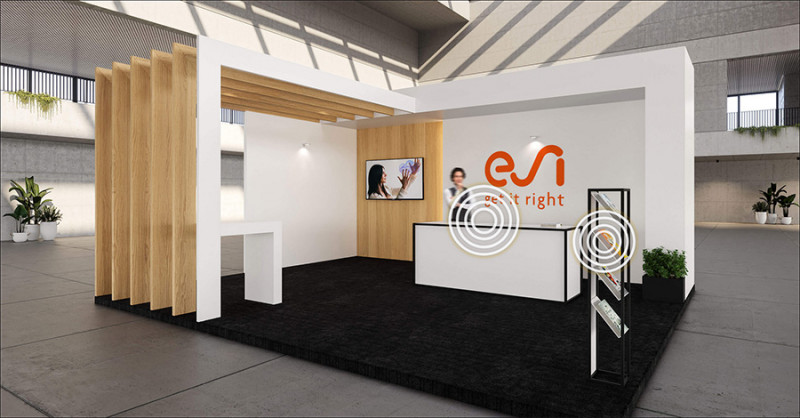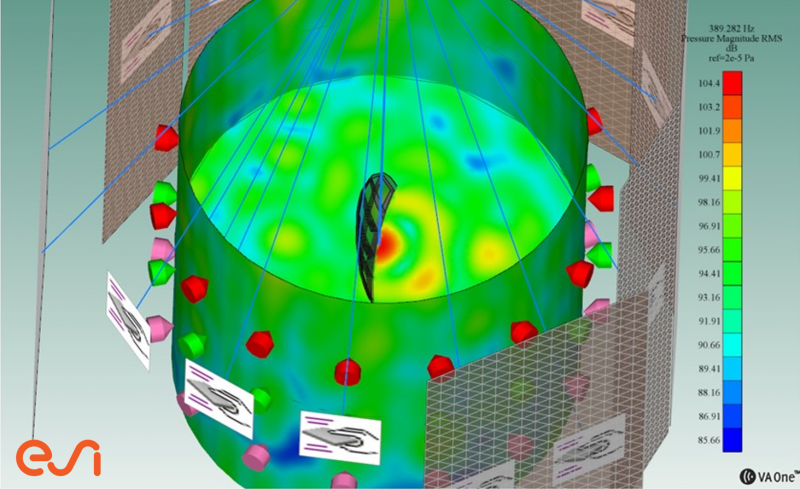ECSSMET 2021
marketing.germany [at] esi-group.com (marketing[dot]germany[at]esi-group[dot]com)
Description
The aim of the European Conference on Spacecraft Structures, Materials and Environmental Testing (ECSSMET 2021) is to promote and facilitate discussion and exchange of experience and information among members of the various mechanical engineering disciplines and environmental testing community concerned with spacecraft development, assembly, integration and verification.
Presentations
ESI is participating this event and presenting the following topics:
Experimental Correlation of DFAT®simulation
Presenter: Bryce Gardner
When: March 24th
Time: 10 am
Session: 10, Acoustics - Testing
Summary
Spacecraft qualification testing is traditionally done in reverberation chambers. A Direct Field Acoustic Test® (DFAT®) is an alternative test approach. It is desirable to model the test test in detail to have confidence that the test will not damage the flight hardward. In this paper, a simulation of a the DFAT test will be demonstrated. The simulation of DFAT testing has been progressing. While simulating complex acoustic environments such as DFAT, initial simulation algorithms did not offer the flexibility to prioritize acoustic levels vs. ensuring diffusivity. However, when performing a correlation study, amplitude at given microphones is often prioritized vs diffusivity. This paper introduces a new optimization algorithm allowing the prioritization of level vs diffusivity. General concepts and comparisons to the previous method is presented. This new implementation is then used to perform a correlation study against test data on a flight article. Measured sound pressure levels from both control and monitor microphones as well as structural responses are compared to simulation noting the similarities and remaining differences between physical and virtual tests. Validated simulation models are then used to evaluate the influence of the test room ceiling on the DFAT microphone responses.
Ray Tracing Model of Liftoff Acoustics
Presenter: Abderrazak Mejdi
When: March 24th
Time: 12:15 pm
Session: 15, Acoustics - Analysis Methods
Summary
Liftoff is often the most extreme acoustic environment seen by launch vehicles and their payloads. Sensitive payloads and launch vehicle components are at risk of vibration damage due to the high levels of acoustic loading on the fairing or other portions of the launch vehicle. The sound sources causing the levels are due to the rocket engines of the vehicle but are quite complex and difficult to characterize. Typically, they are modelled with simple sources in the exhaust plume of the launch vehicle. In this paper, we will demonstrate how a ray tracing analysis can be used to get a distributed loading on the surface of the launch vehicle. We will also demonstrate how modelling the excitation at the source may be used to predict the effects of different tunnel geometries. The ability to understand the pressure distribution on the surface of the vehicle provides a way to refine how the sound field interacts with and transmits through the fairing and surfaces of the launch vehicle.
The size of the geometric surfaces (launch pad, tunnel, launch vehicle, etc) involved in this problem make it difficult to model this with full wave equation-based approaches such as the Boundary Element Method (BEM). Because ray tracing is not mesh-based and the rays are traced only once for all the frequencies, the ray tracing approach can address this problem over the full frequency range. Ray tracing can provide information about the pressure distribution over the launch vehicle’s surface and this can be used as an excitation for Finite Element (FE) or Statistical Energy Analysis (SEA) models. These models can then be used to understand the vibration response of critical equipment. The ray tracing results are presented and compared with BEM results.
Booth
Visit our virtual booth during the event.
You will find us in the exhibition area!

© BESL Eventagentur GmbH & Co.KG
About VA One
Ensure Structural Integrity of Satellite and Space Hardware From Acoustic Loading
Using lightweight materials, including composite and honeycomb panels, can be challenging, especially when the end-product is subject to high-intensity stresses but must comply with stringent launch certification requirements. ESI VA One simulation software enables satellite and space hardware designers to confidently design and build their product using high-quality composite materials to meet the optimum performance of the spacecraft through launch, flight, and deployment.
Features:
- Validate dynamic stresses and forces of lightweight structures that can be easily damaged by acoustic excitation experienced during deployment
- Accurately predict structural response of space hardware during launch by using Virtual Acoustic Engineering and DFAT® simulation capabilities avoiding the risk of having to move sensitive hardware to remote facilities for testing
